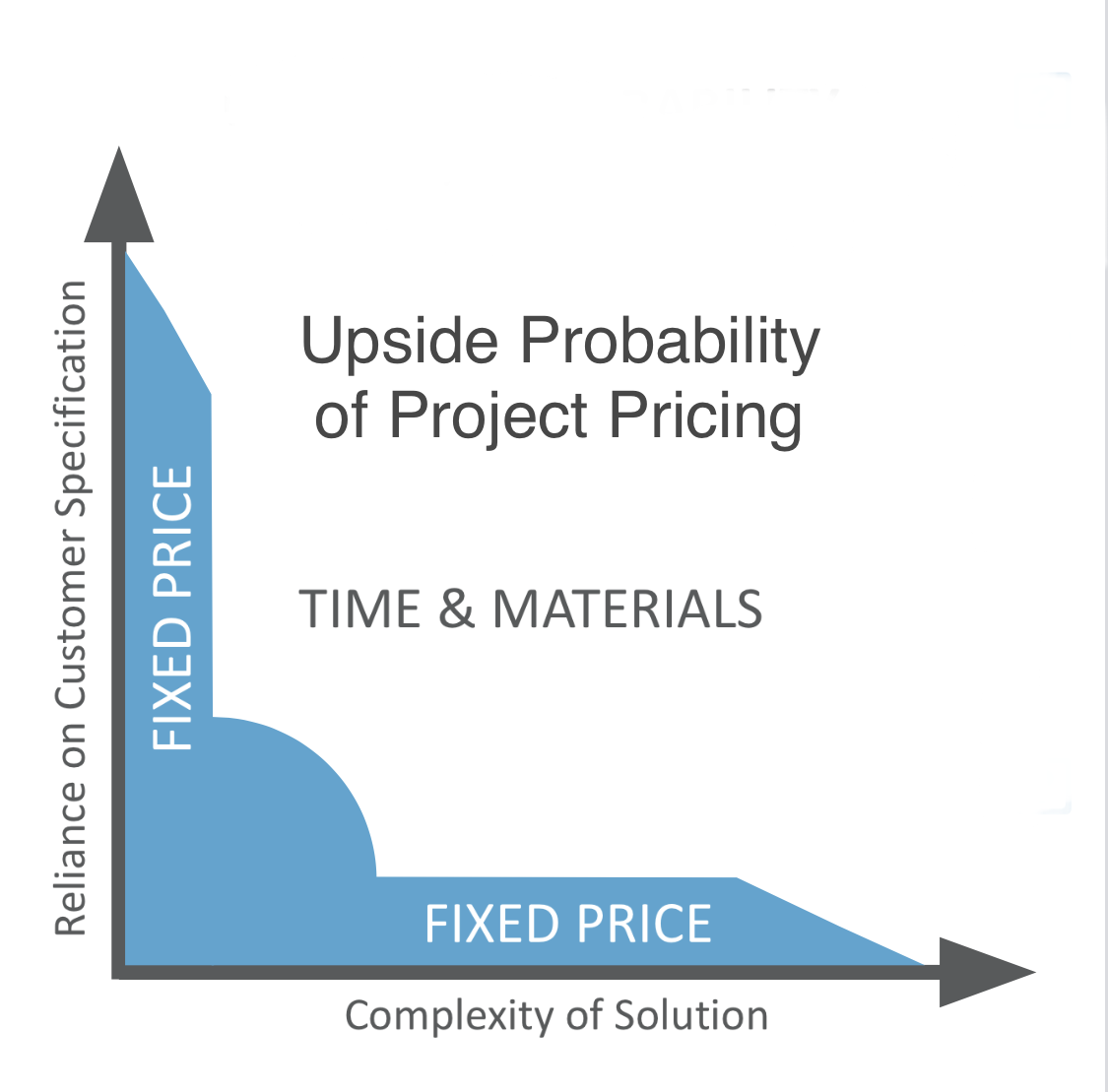|
I'm often incorrectly accused of being a time and materials zealot, against the use of fixed fee for project delivery. The truth is that I believe both a fixed and a time and materials approach can be profitable, but that we often make such a decision without understanding the true nature projects. We often allow the customer to demand this as a requirement without explaining to them the implication of their request.
The graph below is what I call the “Upside Probability of Project Pricing”. It identifies that a fixed fee is most favorable towards profitability when either you can reduce the amount of impact a customer has on the project's process or you can reduce the overall complexity of the project. Based on my experience, you don't need the collection of years of research to determine why this works.
The more involvement the customer has with the execution of a project, the more likely they will cause a delay or discover an unexpected requirement that has not been priced. This increased probability is not because of the project delivery method, but because of the lack of information available during the sales process. Unlike services from other industries such as construction, we don't have a blueprint that can create a bill of materials before the contract is signed. Hence, we need the customer in the project execution process to help us understand their needs, clarify workflow rules and then validate and own the solution in their business operating environment. Therefore, if you can reduce the customer's involvement, then fixed price might be a good idea, but the more involvement you need from the customer, the less likely that will remain true.
The more complex a solution is, the less likely it is that our understanding of the project is accurate. This means that we will discover new details about the solution as we journey through the project. Fixed fee works great when project's are simple and repetitive because we have confidence that the project's effort estimate will be reasonably accurate to what it will eventually take to complete the project. The greater the project's complexity, the less likely it is that this will remain true.
Hence, if you can restrict the degree of complexity of a solution or you can reduce the involvement of the customer in the project (or both) then you have a good reason to price your project as a fixed price offering. This works for packaged solutions, time-based consulting services and simplified solutions, but once they become more complex and require a greater level of involvement from the customer to define and understand the solution, the more likely it is that the price should be time and materials in order to achieve a profitable outcome.
|

